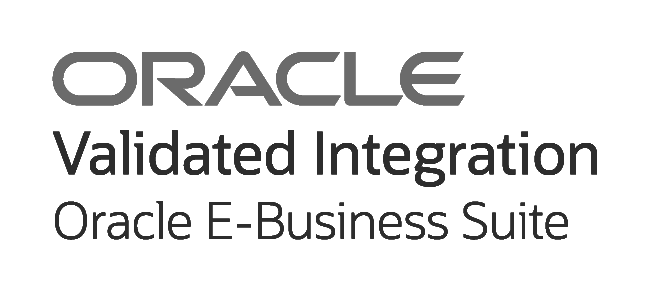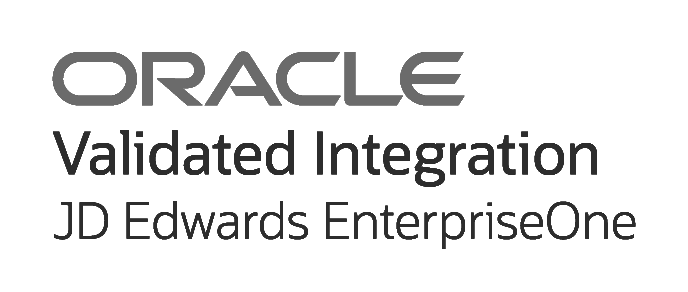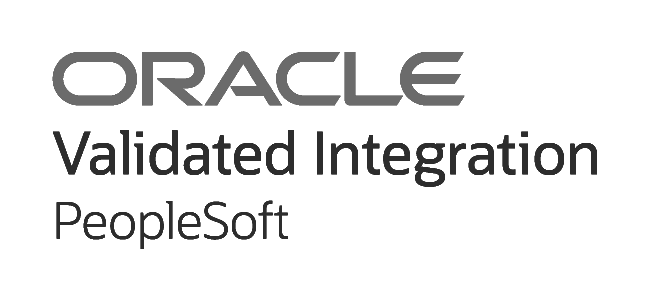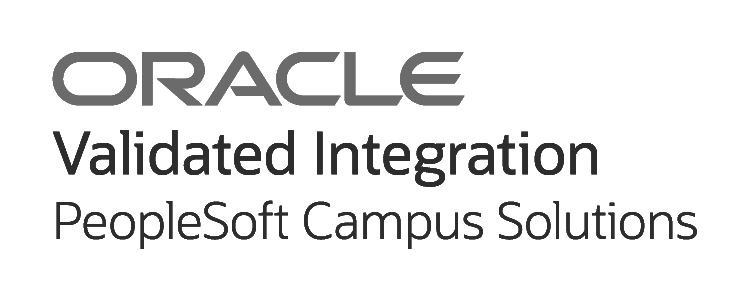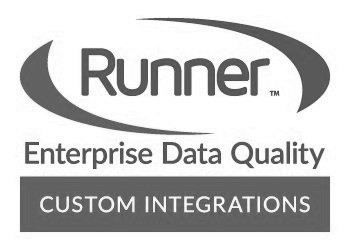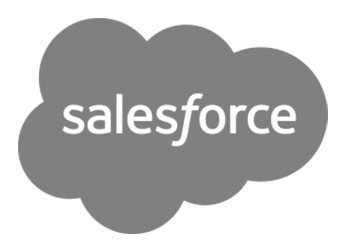




CLEAN_Address is the leading, integrated address
CLEAN_Address is the leading, integrated address
The leading, integrated address verification solution for Higher Education and Business.
verification solution for Higher Education and Business.
verification solution for Higher Education and Business.
Get Your Data Squeaky Clean®
Get Your Data Squeaky Clean®
Get Your Data Squeaky Clean®


Estimated Customer Savings


Industries Served


Addresses Verified


Satisfied Customers
Unmatched Data Quality
Unmatched Data Quality
Unmatched Data Quality
Our address verification solutions ensure data accuracy and integrity across your enterprise. With real-time verification, batch processing, and continuous updates for data changes, Runner EDQ helps maintain data quality and prevent decay, ensuring your records are always up-to-date.
Our address verification solutions ensure data accuracy and integrity across your enterprise. With real-time verification, batch processing, and continuous updates for data changes, Runner EDQ helps maintain data quality and prevent decay, ensuring your records are always up-to-date.
Our address verification solutions ensure data accuracy and integrity across your enterprise. With real-time verification, batch processing, and continuous updates for data changes, Runner EDQ helps maintain data quality and prevent decay, ensuring your records are always up-to-date.
Real-Time
Real time address verification in all address entry pages using native fields in your SIS or CRM.
Batch Processing
Batch Processing
Integrated batch processing corrects and formats your existing address records.
Updating Data Changes
Ensure your data stays current with regular updates to account for address changes and moves.
Seamless Integrations
Seamless Integrations
Seamless Integrations
Our integrated data quality solutions verify, correct, and standardize verification corrects and standardizes postal addresses within Oracle®, Ellucian®, Salesforce® and other enterprise systems (ERP, SIS, HCM, CRM, MDM). Our seamless integration provides address correction in real-time at the point of entry and for existing data via batch and change of address processing.
Our integrated data quality solutions verify, correct, and standardize verification corrects and standardizes postal addresses within Oracle®, Ellucian®, Salesforce® and other enterprise systems (ERP, SIS, HCM, CRM, MDM). Our seamless integration provides address correction in real-time at the point of entry and for existing data via batch and change of address processing.
Correct addresses instantly in real-time and batch.
Correct addresses instantly in real-time and batch.
Correct addresses instantly in real-time and batch.
Correct addresses instantly in real-time and batch.
Correct addresses instantly in real-time and batch.
Correct addresses instantly in real-time and batch.
Standardize data across enterprise systems.
Standardize data across enterprise systems.
Standardize data across enterprise systems.
Standardize data across enterprise systems.
Standardize data across enterprise systems.
Standardize data across enterprise systems.
Verify records without changing the user experience.
Verify records without changing the user experience.
Verify records without changing the user experience.
Verify records without changing the user experience.
Verify records without changing the user experience.
Verify records without changing the user experience.
Choose Your Vertical
Choose Your Vertical
Choose Your Vertical










Higher Education
Support the student and alumni lifecycle with real-time and batch address verification for admissions, enrollment, and alumni engagement. Enforce data standards enterprise-wide while filling alumni contact gaps.
Ellucian Banner ®, Ellucian Colleague ®
Oracle's PeopleSoft Campus Solutions ®
Salesforce ®
Ellucian Banner ®, Ellucian Colleague ®
Oracle's PeopleSoft Campus Solutions ®
Salesforce ®
Business
Business
Business
Improve data accuracy with real-time and batch address verification for employee records, payroll, benefits, and vendor management. Keep HR and finance systems up-to-date without disrupting payroll or billing.
Oracle E-Business ®, Oracle's PeopleSoft ®,
Oracle's JD Edwards EnterpriseOne ® Salesforce ®
Oracle E-Business ®, Oracle's PeopleSoft ®,
Oracle's JD Edwards EnterpriseOne ® Salesforce ®
CRM
Maximize customer engagement and retention with real-time, accurate data management in your CRM. Ensure consistent and up-to-date contact information across the CRM ecosystem.
Maximize customer engagement and retention with real-time, accurate data management in your CRM. Ensure consistent and up-to-date contact information across the CRM ecosystem.
Salesforce ®
Salesforce ®
Salesforce ®
Salesforce ®
Salesforce ®
Developers
Developers
Developers
Empower your development team with seamless integration tools and APIs to maintain data accuracy across systems. Streamline address verification workflows and enhance application performance.
Empower your development team with seamless integration tools and APIs to maintain data accuracy across systems. Streamline address verification workflows and enhance application performance.
Oracle E-Business ®, Oracle's PeopleSoft ®
Oracle's JD Edwards EnterpriseOne ®
Salesforce ®
Oracle E-Business ®, Oracle's PeopleSoft ®
Oracle's JD Edwards EnterpriseOne ®
Salesforce ®
Oracle E-Business ®, Oracle's PeopleSoft ®
Oracle's JD Edwards EnterpriseOne ®
Salesforce ®

Trending Industry Insights
Trending Industry Insights
Trending Industry Insights




The Voice of Our Customers
The Voice of Our Customers
The Voice of Our Customers
LAURA BROWN
University of Louisville
Assistant Director, Biographical Processing for Advancement Services
"The use of Clean Student in Advance has reduced our returned mail. It has increased productivity for our staff by providing address verification at point of entry, eliminating the need to use other databases for address research.”
TIFANI POOL
Georgia Southern University
Assistant Registrar, Office of the Registrar
"Since we implemented Clean Student, the Registration area of the office rarely has to assist students with making address changes. Clean Student is programmed to find the correct mailing address for the students in Wings (and Banner) and saves it in our system correctly for postal mailing.”
ALLEN C. SAYLOR
Abraham Baldwin Agricultural College
Director of Application Services, ISO
“Clean Student allows the Admissions Processors fast and easy address clean-up during the application process. It makes the necessary changes to the street address and zip codes with the stroke of one key. It has also helped to decrease the amount of return mail.”
RICH BARNHART
Stephen F. Austin State University
Assistant Director Applications
"Partnering with Runner EDQ and using their CLEAN_Address solution has enabled us to rectify address errors at data entry. This has significantly reduced returned mail and has substantially sped up our recruitment mailing processes."

GORDON KLINDT
State of Wisconsin STAR Project
Technical Manager
"The State of Wisconsin implemented Runner EDQ’s CLEAN_Address solution because of CLEAN_Address software delivery update process, keeping our STAR Enterprise system address information accurate. Secondly, having CLEAN_Address it reduces our returned mail over 98% providing less returns and errors with vendor payments."

MELISSA WHALEN
University of Missouri
Programmer / Analyst
"We use Runner EDQ’s CLEAN_Address product with our PeopleSoft CS, HRMS, and FSCM applications as well as with our Advance Alumni software. Point of entry and batch address verification has provided the ability to ensure we have a valid addresses at the point of entry instead of finding out we have a problem when the mail is returned."

JEFFREY BUTERA
Hampshire College
Associate Director for Applications and Web Services
"We have been using Runner EDQ’s CLEAN_Address product for our Ellucian Colleague ERP application and have dramatically reduced the amount of returned mail from admissions and advancement campaigns"
LAURA BROWN
University of Louisville
Assistant Director, Biographical Processing for Advancement Services
"The use of Clean Student in Advance has reduced our returned mail. It has increased productivity for our staff by providing address verification at point of entry, eliminating the need to use other databases for address research.”
TIFANI POOL
Georgia Southern University
Assistant Registrar, Office of the Registrar
"Since we implemented Clean Student, the Registration area of the office rarely has to assist students with making address changes. Clean Student is programmed to find the correct mailing address for the students in Wings (and Banner) and saves it in our system correctly for postal mailing.”
ALLEN C. SAYLOR
Abraham Baldwin Agricultural College
Director of Application Services, ISO
“Clean Student allows the Admissions Processors fast and easy address clean-up during the application process. It makes the necessary changes to the street address and zip codes with the stroke of one key. It has also helped to decrease the amount of return mail.”
RICH BARNHART
Stephen F. Austin State University
Assistant Director Applications
"Partnering with Runner EDQ and using their CLEAN_Address solution has enabled us to rectify address errors at data entry. This has significantly reduced returned mail and has substantially sped up our recruitment mailing processes."

GORDON KLINDT
State of Wisconsin STAR Project
Technical Manager
"The State of Wisconsin implemented Runner EDQ’s CLEAN_Address solution because of CLEAN_Address software delivery update process, keeping our STAR Enterprise system address information accurate. Secondly, having CLEAN_Address it reduces our returned mail over 98% providing less returns and errors with vendor payments."

MELISSA WHALEN
University of Missouri
Programmer / Analyst
"We use Runner EDQ’s CLEAN_Address product with our PeopleSoft CS, HRMS, and FSCM applications as well as with our Advance Alumni software. Point of entry and batch address verification has provided the ability to ensure we have a valid addresses at the point of entry instead of finding out we have a problem when the mail is returned."

JEFFREY BUTERA
Hampshire College
Associate Director for Applications and Web Services
"We have been using Runner EDQ’s CLEAN_Address product for our Ellucian Colleague ERP application and have dramatically reduced the amount of returned mail from admissions and advancement campaigns"
LAURA BROWN
University of Louisville
Assistant Director, Biographical Processing for Advancement Services
"The use of Clean Student in Advance has reduced our returned mail. It has increased productivity for our staff by providing address verification at point of entry, eliminating the need to use other databases for address research.”
TIFANI POOL
Georgia Southern University
Assistant Registrar, Office of the Registrar
"Since we implemented Clean Student, the Registration area of the office rarely has to assist students with making address changes. Clean Student is programmed to find the correct mailing address for the students in Wings (and Banner) and saves it in our system correctly for postal mailing.”
ALLEN C. SAYLOR
Abraham Baldwin Agricultural College
Director of Application Services, ISO
“Clean Student allows the Admissions Processors fast and easy address clean-up during the application process. It makes the necessary changes to the street address and zip codes with the stroke of one key. It has also helped to decrease the amount of return mail.”
RICH BARNHART
Stephen F. Austin State University
Assistant Director Applications
"Partnering with Runner EDQ and using their CLEAN_Address solution has enabled us to rectify address errors at data entry. This has significantly reduced returned mail and has substantially sped up our recruitment mailing processes."

GORDON KLINDT
State of Wisconsin STAR Project
Technical Manager
"The State of Wisconsin implemented Runner EDQ’s CLEAN_Address solution because of CLEAN_Address software delivery update process, keeping our STAR Enterprise system address information accurate. Secondly, having CLEAN_Address it reduces our returned mail over 98% providing less returns and errors with vendor payments."

MELISSA WHALEN
University of Missouri
Programmer / Analyst
"We use Runner EDQ’s CLEAN_Address product with our PeopleSoft CS, HRMS, and FSCM applications as well as with our Advance Alumni software. Point of entry and batch address verification has provided the ability to ensure we have a valid addresses at the point of entry instead of finding out we have a problem when the mail is returned."

JEFFREY BUTERA
Hampshire College
Associate Director for Applications and Web Services
"We have been using Runner EDQ’s CLEAN_Address product for our Ellucian Colleague ERP application and have dramatically reduced the amount of returned mail from admissions and advancement campaigns"
LAURA BROWN
University of Louisville
Assistant Director, Biographical Processing for Advancement Services
"The use of Clean Student in Advance has reduced our returned mail. It has increased productivity for our staff by providing address verification at point of entry, eliminating the need to use other databases for address research.”
TIFANI POOL
Georgia Southern University
Assistant Registrar, Office of the Registrar
"Since we implemented Clean Student, the Registration area of the office rarely has to assist students with making address changes. Clean Student is programmed to find the correct mailing address for the students in Wings (and Banner) and saves it in our system correctly for postal mailing.”
ALLEN C. SAYLOR
Abraham Baldwin Agricultural College
Director of Application Services, ISO
“Clean Student allows the Admissions Processors fast and easy address clean-up during the application process. It makes the necessary changes to the street address and zip codes with the stroke of one key. It has also helped to decrease the amount of return mail.”
RICH BARNHART
Stephen F. Austin State University
Assistant Director Applications
"Partnering with Runner EDQ and using their CLEAN_Address solution has enabled us to rectify address errors at data entry. This has significantly reduced returned mail and has substantially sped up our recruitment mailing processes."

GORDON KLINDT
State of Wisconsin STAR Project
Technical Manager
"The State of Wisconsin implemented Runner EDQ’s CLEAN_Address solution because of CLEAN_Address software delivery update process, keeping our STAR Enterprise system address information accurate. Secondly, having CLEAN_Address it reduces our returned mail over 98% providing less returns and errors with vendor payments."

MELISSA WHALEN
University of Missouri
Programmer / Analyst
"We use Runner EDQ’s CLEAN_Address product with our PeopleSoft CS, HRMS, and FSCM applications as well as with our Advance Alumni software. Point of entry and batch address verification has provided the ability to ensure we have a valid addresses at the point of entry instead of finding out we have a problem when the mail is returned."

JEFFREY BUTERA
Hampshire College
Associate Director for Applications and Web Services
"We have been using Runner EDQ’s CLEAN_Address product for our Ellucian Colleague ERP application and have dramatically reduced the amount of returned mail from admissions and advancement campaigns"
LAURA BROWN
University of Louisville
Assistant Director, Biographical Processing for Advancement Services
"The use of Clean Student in Advance has reduced our returned mail. It has increased productivity for our staff by providing address verification at point of entry, eliminating the need to use other databases for address research.”
TIFANI POOL
Georgia Southern University
Assistant Registrar, Office of the Registrar
"Since we implemented Clean Student, the Registration area of the office rarely has to assist students with making address changes. Clean Student is programmed to find the correct mailing address for the students in Wings (and Banner) and saves it in our system correctly for postal mailing.”
ALLEN C. SAYLOR
Abraham Baldwin Agricultural College
Director of Application Services, ISO
“Clean Student allows the Admissions Processors fast and easy address clean-up during the application process. It makes the necessary changes to the street address and zip codes with the stroke of one key. It has also helped to decrease the amount of return mail.”
RICH BARNHART
Stephen F. Austin State University
Assistant Director Applications
"Partnering with Runner EDQ and using their CLEAN_Address solution has enabled us to rectify address errors at data entry. This has significantly reduced returned mail and has substantially sped up our recruitment mailing processes."

GORDON KLINDT
State of Wisconsin STAR Project
Technical Manager
"The State of Wisconsin implemented Runner EDQ’s CLEAN_Address solution because of CLEAN_Address software delivery update process, keeping our STAR Enterprise system address information accurate. Secondly, having CLEAN_Address it reduces our returned mail over 98% providing less returns and errors with vendor payments."

MELISSA WHALEN
University of Missouri
Programmer / Analyst
"We use Runner EDQ’s CLEAN_Address product with our PeopleSoft CS, HRMS, and FSCM applications as well as with our Advance Alumni software. Point of entry and batch address verification has provided the ability to ensure we have a valid addresses at the point of entry instead of finding out we have a problem when the mail is returned."

JEFFREY BUTERA
Hampshire College
Associate Director for Applications and Web Services
"We have been using Runner EDQ’s CLEAN_Address product for our Ellucian Colleague ERP application and have dramatically reduced the amount of returned mail from admissions and advancement campaigns"
LAURA BROWN
University of Louisville
Assistant Director, Biographical Processing for Advancement Services
"The use of Clean Student in Advance has reduced our returned mail. It has increased productivity for our staff by providing address verification at point of entry, eliminating the need to use other databases for address research.”
TIFANI POOL
Georgia Southern University
Assistant Registrar, Office of the Registrar
"Since we implemented Clean Student, the Registration area of the office rarely has to assist students with making address changes. Clean Student is programmed to find the correct mailing address for the students in Wings (and Banner) and saves it in our system correctly for postal mailing.”
ALLEN C. SAYLOR
Abraham Baldwin Agricultural College
Director of Application Services, ISO
“Clean Student allows the Admissions Processors fast and easy address clean-up during the application process. It makes the necessary changes to the street address and zip codes with the stroke of one key. It has also helped to decrease the amount of return mail.”
RICH BARNHART
Stephen F. Austin State University
Assistant Director Applications
"Partnering with Runner EDQ and using their CLEAN_Address solution has enabled us to rectify address errors at data entry. This has significantly reduced returned mail and has substantially sped up our recruitment mailing processes."

GORDON KLINDT
State of Wisconsin STAR Project
Technical Manager
"The State of Wisconsin implemented Runner EDQ’s CLEAN_Address solution because of CLEAN_Address software delivery update process, keeping our STAR Enterprise system address information accurate. Secondly, having CLEAN_Address it reduces our returned mail over 98% providing less returns and errors with vendor payments."

MELISSA WHALEN
University of Missouri
Programmer / Analyst
"We use Runner EDQ’s CLEAN_Address product with our PeopleSoft CS, HRMS, and FSCM applications as well as with our Advance Alumni software. Point of entry and batch address verification has provided the ability to ensure we have a valid addresses at the point of entry instead of finding out we have a problem when the mail is returned."

JEFFREY BUTERA
Hampshire College
Associate Director for Applications and Web Services
"We have been using Runner EDQ’s CLEAN_Address product for our Ellucian Colleague ERP application and have dramatically reduced the amount of returned mail from admissions and advancement campaigns"
LAURA BROWN
University of Louisville
Assistant Director, Biographical Processing for Advancement Services
"The use of Clean Student in Advance has reduced our returned mail. It has increased productivity for our staff by providing address verification at point of entry, eliminating the need to use other databases for address research.”
TIFANI POOL
Georgia Southern University
Assistant Registrar, Office of the Registrar
"Since we implemented Clean Student, the Registration area of the office rarely has to assist students with making address changes. Clean Student is programmed to find the correct mailing address for the students in Wings (and Banner) and saves it in our system correctly for postal mailing.”
ALLEN C. SAYLOR
Abraham Baldwin Agricultural College
Director of Application Services, ISO
“Clean Student allows the Admissions Processors fast and easy address clean-up during the application process. It makes the necessary changes to the street address and zip codes with the stroke of one key. It has also helped to decrease the amount of return mail.”
RICH BARNHART
Stephen F. Austin State University
Assistant Director Applications
"Partnering with Runner EDQ and using their CLEAN_Address solution has enabled us to rectify address errors at data entry. This has significantly reduced returned mail and has substantially sped up our recruitment mailing processes."

GORDON KLINDT
State of Wisconsin STAR Project
Technical Manager
"The State of Wisconsin implemented Runner EDQ’s CLEAN_Address solution because of CLEAN_Address software delivery update process, keeping our STAR Enterprise system address information accurate. Secondly, having CLEAN_Address it reduces our returned mail over 98% providing less returns and errors with vendor payments."

MELISSA WHALEN
University of Missouri
Programmer / Analyst
"We use Runner EDQ’s CLEAN_Address product with our PeopleSoft CS, HRMS, and FSCM applications as well as with our Advance Alumni software. Point of entry and batch address verification has provided the ability to ensure we have a valid addresses at the point of entry instead of finding out we have a problem when the mail is returned."

JEFFREY BUTERA
Hampshire College
Associate Director for Applications and Web Services
"We have been using Runner EDQ’s CLEAN_Address product for our Ellucian Colleague ERP application and have dramatically reduced the amount of returned mail from admissions and advancement campaigns"
LAURA BROWN
University of Louisville
Assistant Director, Biographical Processing for Advancement Services
"The use of Clean Student in Advance has reduced our returned mail. It has increased productivity for our staff by providing address verification at point of entry, eliminating the need to use other databases for address research.”
TIFANI POOL
Georgia Southern University
Assistant Registrar, Office of the Registrar
"Since we implemented Clean Student, the Registration area of the office rarely has to assist students with making address changes. Clean Student is programmed to find the correct mailing address for the students in Wings (and Banner) and saves it in our system correctly for postal mailing.”
ALLEN C. SAYLOR
Abraham Baldwin Agricultural College
Director of Application Services, ISO
“Clean Student allows the Admissions Processors fast and easy address clean-up during the application process. It makes the necessary changes to the street address and zip codes with the stroke of one key. It has also helped to decrease the amount of return mail.”
RICH BARNHART
Stephen F. Austin State University
Assistant Director Applications
"Partnering with Runner EDQ and using their CLEAN_Address solution has enabled us to rectify address errors at data entry. This has significantly reduced returned mail and has substantially sped up our recruitment mailing processes."

GORDON KLINDT
State of Wisconsin STAR Project
Technical Manager
"The State of Wisconsin implemented Runner EDQ’s CLEAN_Address solution because of CLEAN_Address software delivery update process, keeping our STAR Enterprise system address information accurate. Secondly, having CLEAN_Address it reduces our returned mail over 98% providing less returns and errors with vendor payments."

MELISSA WHALEN
University of Missouri
Programmer / Analyst
"We use Runner EDQ’s CLEAN_Address product with our PeopleSoft CS, HRMS, and FSCM applications as well as with our Advance Alumni software. Point of entry and batch address verification has provided the ability to ensure we have a valid addresses at the point of entry instead of finding out we have a problem when the mail is returned."

JEFFREY BUTERA
Hampshire College
Associate Director for Applications and Web Services
"We have been using Runner EDQ’s CLEAN_Address product for our Ellucian Colleague ERP application and have dramatically reduced the amount of returned mail from admissions and advancement campaigns"
LAURA BROWN
University of Louisville
Assistant Director, Biographical Processing for Advancement Services
"The use of Clean Student in Advance has reduced our returned mail. It has increased productivity for our staff by providing address verification at point of entry, eliminating the need to use other databases for address research.”
TIFANI POOL
Georgia Southern University
Assistant Registrar, Office of the Registrar
"Since we implemented Clean Student, the Registration area of the office rarely has to assist students with making address changes. Clean Student is programmed to find the correct mailing address for the students in Wings (and Banner) and saves it in our system correctly for postal mailing.”
ALLEN C. SAYLOR
Abraham Baldwin Agricultural College
Director of Application Services, ISO
“Clean Student allows the Admissions Processors fast and easy address clean-up during the application process. It makes the necessary changes to the street address and zip codes with the stroke of one key. It has also helped to decrease the amount of return mail.”
RICH BARNHART
Stephen F. Austin State University
Assistant Director Applications
"Partnering with Runner EDQ and using their CLEAN_Address solution has enabled us to rectify address errors at data entry. This has significantly reduced returned mail and has substantially sped up our recruitment mailing processes."

GORDON KLINDT
State of Wisconsin STAR Project
Technical Manager
"The State of Wisconsin implemented Runner EDQ’s CLEAN_Address solution because of CLEAN_Address software delivery update process, keeping our STAR Enterprise system address information accurate. Secondly, having CLEAN_Address it reduces our returned mail over 98% providing less returns and errors with vendor payments."

MELISSA WHALEN
University of Missouri
Programmer / Analyst
"We use Runner EDQ’s CLEAN_Address product with our PeopleSoft CS, HRMS, and FSCM applications as well as with our Advance Alumni software. Point of entry and batch address verification has provided the ability to ensure we have a valid addresses at the point of entry instead of finding out we have a problem when the mail is returned."

JEFFREY BUTERA
Hampshire College
Associate Director for Applications and Web Services
"We have been using Runner EDQ’s CLEAN_Address product for our Ellucian Colleague ERP application and have dramatically reduced the amount of returned mail from admissions and advancement campaigns"
LAURA BROWN
University of Louisville
Assistant Director, Biographical Processing for Advancement Services
"The use of Clean Student in Advance has reduced our returned mail. It has increased productivity for our staff by providing address verification at point of entry, eliminating the need to use other databases for address research.”
TIFANI POOL
Georgia Southern University
Assistant Registrar, Office of the Registrar
"Since we implemented Clean Student, the Registration area of the office rarely has to assist students with making address changes. Clean Student is programmed to find the correct mailing address for the students in Wings (and Banner) and saves it in our system correctly for postal mailing.”
ALLEN C. SAYLOR
Abraham Baldwin Agricultural College
Director of Application Services, ISO
“Clean Student allows the Admissions Processors fast and easy address clean-up during the application process. It makes the necessary changes to the street address and zip codes with the stroke of one key. It has also helped to decrease the amount of return mail.”
RICH BARNHART
Stephen F. Austin State University
Assistant Director Applications
"Partnering with Runner EDQ and using their CLEAN_Address solution has enabled us to rectify address errors at data entry. This has significantly reduced returned mail and has substantially sped up our recruitment mailing processes."

GORDON KLINDT
State of Wisconsin STAR Project
Technical Manager
"The State of Wisconsin implemented Runner EDQ’s CLEAN_Address solution because of CLEAN_Address software delivery update process, keeping our STAR Enterprise system address information accurate. Secondly, having CLEAN_Address it reduces our returned mail over 98% providing less returns and errors with vendor payments."

MELISSA WHALEN
University of Missouri
Programmer / Analyst
"We use Runner EDQ’s CLEAN_Address product with our PeopleSoft CS, HRMS, and FSCM applications as well as with our Advance Alumni software. Point of entry and batch address verification has provided the ability to ensure we have a valid addresses at the point of entry instead of finding out we have a problem when the mail is returned."

JEFFREY BUTERA
Hampshire College
Associate Director for Applications and Web Services
"We have been using Runner EDQ’s CLEAN_Address product for our Ellucian Colleague ERP application and have dramatically reduced the amount of returned mail from admissions and advancement campaigns"
LAURA BROWN
University of Louisville
Assistant Director, Biographical Processing for Advancement Services
"The use of Clean Student in Advance has reduced our returned mail. It has increased productivity for our staff by providing address verification at point of entry, eliminating the need to use other databases for address research.”
TIFANI POOL
Georgia Southern University
Assistant Registrar, Office of the Registrar
"Since we implemented Clean Student, the Registration area of the office rarely has to assist students with making address changes. Clean Student is programmed to find the correct mailing address for the students in Wings (and Banner) and saves it in our system correctly for postal mailing.”
ALLEN C. SAYLOR
Abraham Baldwin Agricultural College
Director of Application Services, ISO
“Clean Student allows the Admissions Processors fast and easy address clean-up during the application process. It makes the necessary changes to the street address and zip codes with the stroke of one key. It has also helped to decrease the amount of return mail.”
RICH BARNHART
Stephen F. Austin State University
Assistant Director Applications
"Partnering with Runner EDQ and using their CLEAN_Address solution has enabled us to rectify address errors at data entry. This has significantly reduced returned mail and has substantially sped up our recruitment mailing processes."

GORDON KLINDT
State of Wisconsin STAR Project
Technical Manager
"The State of Wisconsin implemented Runner EDQ’s CLEAN_Address solution because of CLEAN_Address software delivery update process, keeping our STAR Enterprise system address information accurate. Secondly, having CLEAN_Address it reduces our returned mail over 98% providing less returns and errors with vendor payments."

MELISSA WHALEN
University of Missouri
Programmer / Analyst
"We use Runner EDQ’s CLEAN_Address product with our PeopleSoft CS, HRMS, and FSCM applications as well as with our Advance Alumni software. Point of entry and batch address verification has provided the ability to ensure we have a valid addresses at the point of entry instead of finding out we have a problem when the mail is returned."

JEFFREY BUTERA
Hampshire College
Associate Director for Applications and Web Services
"We have been using Runner EDQ’s CLEAN_Address product for our Ellucian Colleague ERP application and have dramatically reduced the amount of returned mail from admissions and advancement campaigns"
LAURA BROWN
University of Louisville
Assistant Director, Biographical Processing for Advancement Services
"The use of Clean Student in Advance has reduced our returned mail. It has increased productivity for our staff by providing address verification at point of entry, eliminating the need to use other databases for address research.”
TIFANI POOL
Georgia Southern University
Assistant Registrar, Office of the Registrar
"Since we implemented Clean Student, the Registration area of the office rarely has to assist students with making address changes. Clean Student is programmed to find the correct mailing address for the students in Wings (and Banner) and saves it in our system correctly for postal mailing.”
ALLEN C. SAYLOR
Abraham Baldwin Agricultural College
Director of Application Services, ISO
“Clean Student allows the Admissions Processors fast and easy address clean-up during the application process. It makes the necessary changes to the street address and zip codes with the stroke of one key. It has also helped to decrease the amount of return mail.”
RICH BARNHART
Stephen F. Austin State University
Assistant Director Applications
"Partnering with Runner EDQ and using their CLEAN_Address solution has enabled us to rectify address errors at data entry. This has significantly reduced returned mail and has substantially sped up our recruitment mailing processes."

GORDON KLINDT
State of Wisconsin STAR Project
Technical Manager
"The State of Wisconsin implemented Runner EDQ’s CLEAN_Address solution because of CLEAN_Address software delivery update process, keeping our STAR Enterprise system address information accurate. Secondly, having CLEAN_Address it reduces our returned mail over 98% providing less returns and errors with vendor payments."

MELISSA WHALEN
University of Missouri
Programmer / Analyst
"We use Runner EDQ’s CLEAN_Address product with our PeopleSoft CS, HRMS, and FSCM applications as well as with our Advance Alumni software. Point of entry and batch address verification has provided the ability to ensure we have a valid addresses at the point of entry instead of finding out we have a problem when the mail is returned."

JEFFREY BUTERA
Hampshire College
Associate Director for Applications and Web Services
"We have been using Runner EDQ’s CLEAN_Address product for our Ellucian Colleague ERP application and have dramatically reduced the amount of returned mail from admissions and advancement campaigns"
Get in Touch
Get in Touch
Recent Posts
Contact Us
Copyright © 2025 Runner EDQ
Recent Posts

How to Improve Your Data Entry Process
September 9th 2024

How to Improve Your Data Entry Process
September 9th 2024

How to Improve Your Data Entry Process
September 9th 2024
Contact Us
Copyright © 2025 Runner EDQ
Recent Posts
Contact Us
Copyright © 2025 Runner EDQ
